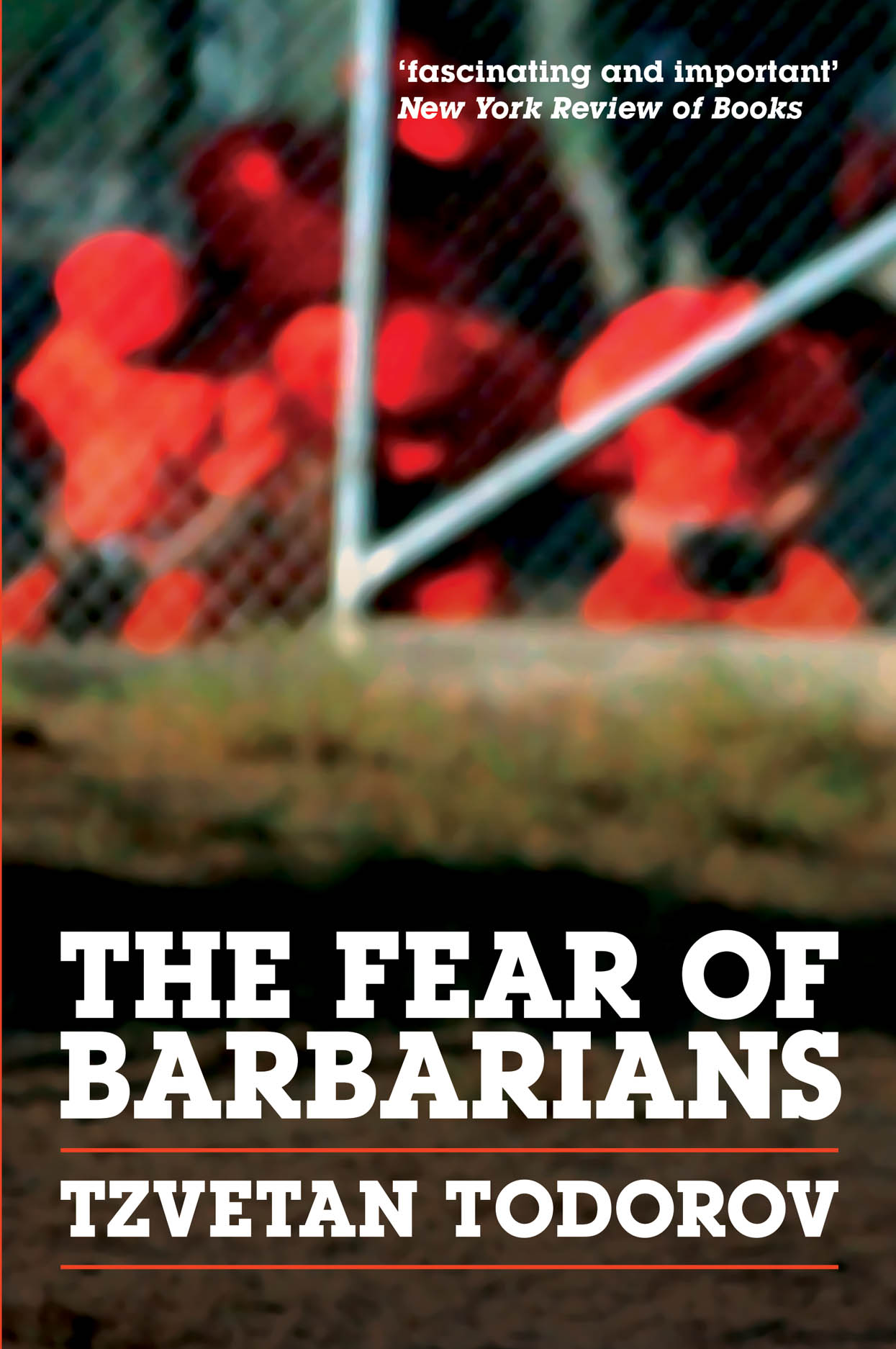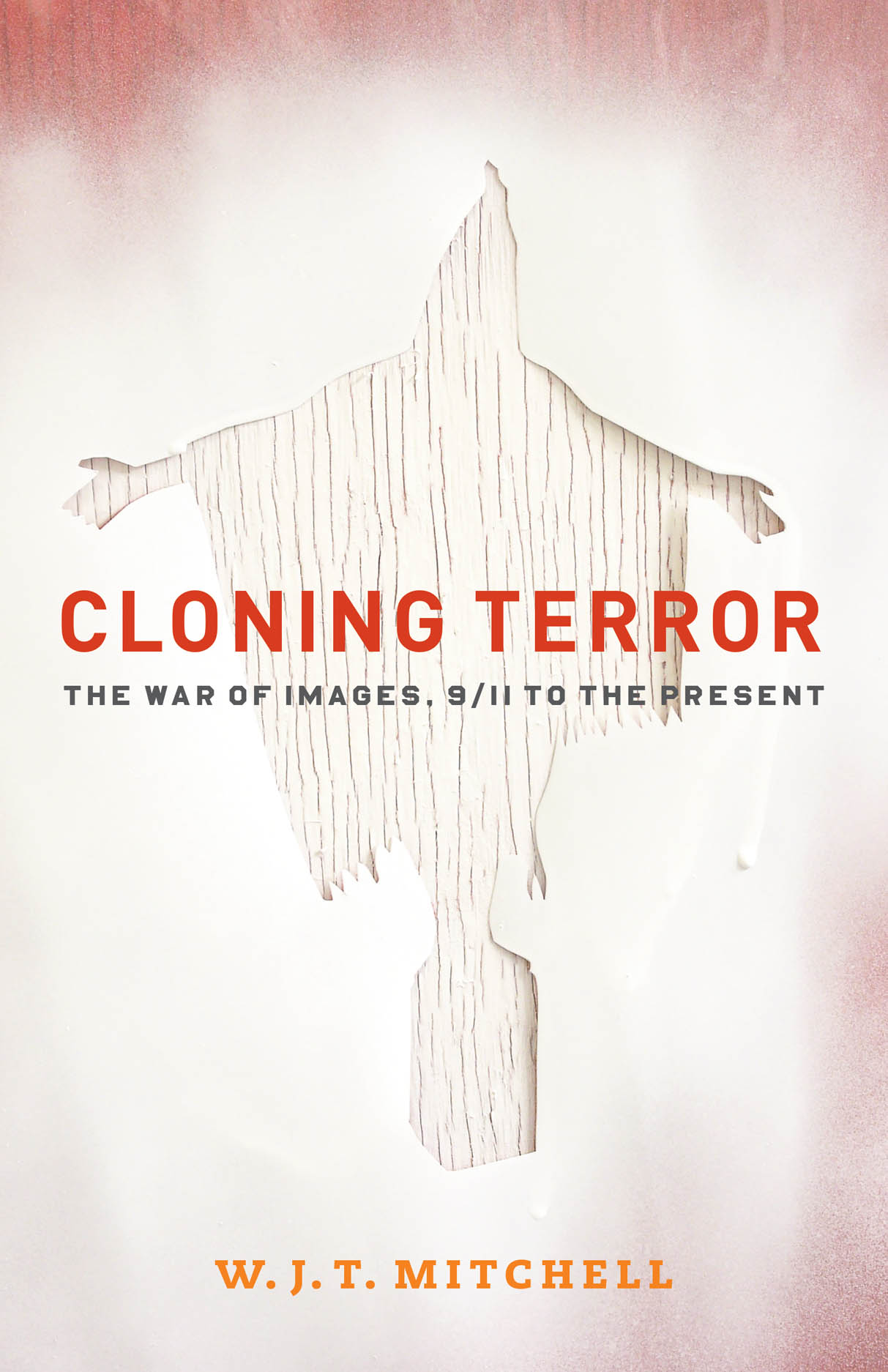TRAFFIC: W. J. T. Mitchell and Tzvetan Todorov

We’re kicking things off with a series of letters between Tzvetan Todorov, author of The Fear of Barbarians: Beyond the Clash of Civilizations and W. J. T. Mitchell, author of Cloning Terror: The War of Images, 9/11 to the Present on the visual imagery of the war on terror, our current global political climate, and the role of the historical uncanny, in everything from Abu Ghraib to Goya’s Disasters of War. Filled with insights into the culture of occupation, Todorov and Mitchell’s correspondence puts the two scholars in conversation for the very first time and we hope that you’ll join us for the next three days as we watch their exchange unfold.
Dear Tzvetan (if I may):
First let me say how much I have enjoyed your new book, The Fear of Barbarians. I find your account of the rise of Islamophobia very compelling, and I am especially struck by your remark that “the fear of barbarians is what risks making us barbarians.” My favorite English poet, William Blake, put it this way: we “become what we behold,” by projecting a feared image of the Other as cruel and uncivilized, and then mirroring back exactly the behavior we deplore. This mirroring process is both convincing and troubling, and I think it forms the common argument of our two books. It suggests that, as the cartoonist Walt Kelly put it so succinctly, “we have met the enemy and he is us.” This, in a nutshell, is the basic argument of my critique of the so-called “war on terror” in Cloning Terror, which, I am proud to say, will appear on the same list with your new book.
This is not to suggest, however, that there are no real enemies of liberal, secular, democratic states. As you point out, the dangers posed by Al-Qaeda and radical Islamism are not imaginary. But it is the Manichean reaction of the Western powers, especially the United States, in conjuring up fantastic categories such as “Islamo-fascism” based on outdated cold war models, that turns Western democracies into dangers to themselves. I argue something very similar in my chapter on the war on terror as an “autoimmune disorder,” extrapolating on Jacques Derrida’s vivid metaphor of the body politic attacking its own constitution. For an American, that is the deepest wound administered by 9/11 and the threat of terrorism. It is a self-inflicted and threatens many of the liberties associated with American democracy.
Your critique of the metaphor of a “war on terror” is incisive and compelling. You demonstrate convincingly how counterproductive it is to apply the inappropriate model of a war between nation-states to a struggle against a relatively small number of extremists, who are in no way representative of the vast majority of their countrymen. This “war,” in fact, as you point out, has had exactly the reverse of its intended effect. Instead of reducing the numbers of the enemy, it has served as a recruiting tool for jihadists, and actually helped to proliferate the number of enemies prepared to sacrifice themselves in acts of revenge. This is the pattern I call “cloning terror,” the paradoxical result of the attempt to stamp out terror by means of wars of invasion and occupation.
I suppose the main difference in our approaches is one of framing.
You choose to situate your discussion within the age-old debate on barbarism versus civilization, with “culture” playing the role of a kind of currency between these two polarities. My framework is more narrowly focused on what I call the “iconological” dimension of the conflict, with an emphasis on the verbal and visual images, metaphors, and pictures that define the symbolic and imaginary elements of the conflict. That is why, for me, the figure of cloning is so crucial. It not only helps to clarify the curious and paradoxical reversal in which a war has the effect of making the enemy stronger; it also captures, in my view, a whole range of specific features of the imagery that defines the war on terror.
I’m thinking of the uncanny parallel between the “clone wars” in American domestic politics, and the war on terror; the proliferation of figures of mirroring, doubling, and repetition; the literalizing of what was previously thought to be “merely metaphoric” in the actualization of the fantasy of a war on terror, and the techno-scientific realization of the ancient fantasy of creating artificial life. In this regard, I have found myself recently —when asked to reflect on the overall argument of Cloning Terror—going back to your classic early book, The Fantastic and your brilliant location of the concept of the uncanny as a transitional aesthetic between fantastic narratives and the detective story, a liminal realm between imagination and reality. In retrospect, I think I could have labeled the argument of Cloning Terror as an instance of “the historical uncanny,” describing a period in which the imaginary and metaphoric (the war on terror) became all too real and literal.
The clone, clearly, is also uncanny in the most precise sense, as a figure of doubling and repetition, as well as the realization of an ancient fantasy. Unfortunately, the Obama administration has refused to pursue the logic of this uncanny transition all the way into the realm of the detective story, to retrace the steps by which a phantasmatic, endless, and unwinnable war became all too real, along with the realization of the ultimate nightmare—the transformation of a nation officially committed to human rights into a place where one could actually have a public debate over the merits and necessity of torture. The telos of the detective story, the pursuit of truth and justice, however partial, has been renounced by Obama in favor of “looking forward, not backward.” But the logic of the uncanny tells us that the past inevitably returns, and the ghosts of Abu Ghraib are waiting for us in the future.
I wonder if, looking back over the arguments you make in The Fear of Barbarians, you have had any second thoughts of this kind? If you had to reframe the argument of your book now, how would you do it? Your afterword was an attempt to bring your book up to date in 2010, well into Obama’s administration, and my book portrayed itself as a history that continues “to the present”—clearly an impossible task. I very much look forward to hearing from you.
With best wishes,
Tom Mitchell
Thank you very much for your receptive comments and your generous appreciation of my book. I, too, was struck by the closeness of our two projects, which becomes clear on the very first page of both, due to the name of our common addressee, Edward Said. As you mention early in your book, one can insist on either “what happened” or “how it was represented.” We both know that this seemingly obvious distinction raises some tricky problems, since how our perception selects and combines the features of the observed event is already a form of interpretation: things do happen in the outside world but it is the representation we give them, whether in words or images, that transforms them into intelligible events. Still, this distinction permits me to describe our two books and their complimentary nature—my focus being mainly on the events that shaped our recent history, and yours on their representation. At the same time, you have an incomparably better grasp of the internal American scene, which allows you to deal with many images unknown to me, and, more importantly, to connect the coverage of the “war on terror” with the debate on cloning.
One of my main purposes in my book was to insist on a point that you formulate at the very start of your letter: “The war on terror was having the effect of recruiting more jihadists, and increasing the number of terrorist attacks.” Neither one of us recommends embracing terrorism and thus ceasing to fight it, but we believe that the current means used to achieve our aim are counterproductive. Just as self-damaging are other measures of fighting Islam in European countries nowadays, where the rise of a xenophobic extreme right is a concrete reality. This is why I devoted a chapter in The Fear of Barbarians to the discussion of certain “current affairs,” such as the Dutch film Submission, the Danish caricatures, and the Pope’s speech. Not that these situations are simple to deal with, but I am sure that the politics of intolerance and xenophobia only make things worse.
Your use of the cloning image allows you to insist on a point with which I agree completely: the danger of becoming a mirror image of the enemy one is fighting. The torture issue, a common topic of both our books, provides a fine illustration of this. Let me add that, if even the practices and theories of torture were produced under the responsibility of the United States government, European governments cannot be considered as entirely innocent: their agents were taking part in the interrogations and none of these governments ever spoke openly against the acts of torture.
Obama’s election did indeed change the general climate of fear and the triumphant rhetoric of war, but other changes are slow to come. Guantanamo is not closed, the absurd war in Afghanistan is still going on, and the Bagram prison camp still cannot be visited by independent observers.
To come closer to the process of representation: in reading your book, I am struck by the proximity of the images you are discussing with the images of a painter I have been working on since the completion of The Fear of Barbarians: Goya. His Disasters of War and its drawings are sometimes surprisingly close to contemporary photos or paintings. Maybe I should put it the other way around: the most striking of our contemporary images remind me in their symbolic power of certain Goya engravings and drawings. I am sending you here two of them: one shows the pleasure taken by the executioner, smiling next to the victim, another illustrates an act of torture. Don’t they remind us of attitudes captured by the Abu Ghraib pictures? Others are close to the Vietnam War images you mention.

I am struck by another coincidence. The War for Independence in Spain (1808–13) that Goya’s artwork recorded, was fought against Napoleon’s army but also against the enlightened Spaniards who saw in the occupation the occasion to accelerate the evolution of society, was also the first asymmetrical war between a modern army and a clandestine guerrilla (the word itself was invented on this occasion). The Afghan Taliban plays today the role of the reactionary Spanish clergy of the time, which defended national independence and traditional values; our occupation forces “bringing” democracy and human rights to Afghanistan play the part of the French regiments claiming that they bestow liberty and equality to the oppressed.
With my best wishes,
Tzvetan
Read the entire three-part conversation between Mitchell and Todorov: Part II and Part III.
